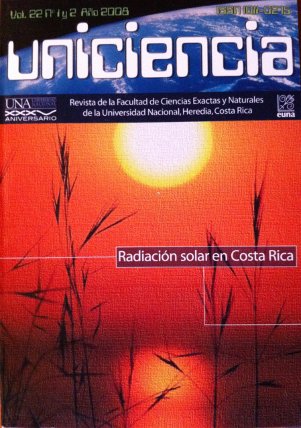Diferenciación molecular de Lemna aequinoctialis y l. Valdiviana (lemnaceae) por patrones proteicos (ING)
Keywords:
Lemna valdiviana, L. aequinoctialis, total protein, electrophoresisAbstract
This study was done at the Molecular Genetics Laboratory of Universidad Nacional, Heredia, Costa Rica. Previously identified macrophyte aquatic plants Lemna valdiviana and L. aequinoctialis were used. Usually these species are found in residual water or salt rich water. Recently these species have been considered as indicators of contamination caused by pesticides and herbicides present in the water. Their protein composition achieves levels as high as 38-43% of dry matter, which is important for different practical purposes. Total protein extraction was carried out in reducing conditions, using discontinuous polyacrylamide gel electrophoresis with SDS (SDS-PAGE). Stacking gels were 8 and 10%, resolving gel was 4% and running time was 3-4 hours. Gels were dyed with Coomasie blue. Protein patterns showed genetic differences between both species which might be due to differences in the habitat and in their reproduction type.Downloads
Published
Issue
Section
License
Authors who publish with this journal agree to the following terms:
1. Authors guarantee the journal the right to be the first publication of the work as licensed under a Creative Commons Attribution License that allows others to share the work with an acknowledgment of the work's authorship and initial publication in this journal.
2. Authors can set separate additional agreements for non-exclusive distribution of the version of the work published in the journal (eg, place it in an institutional repository or publish it in a book), with an acknowledgment of its initial publication in this journal.
3. The authors have declared to hold all permissions to use the resources they provided in the paper (images, tables, among others) and assume full responsibility for damages to third parties.
4. The opinions expressed in the paper are the exclusive responsibility of the authors and do not necessarily represent the opinion of the editors or the Universidad Nacional.
Uniciencia Journal and all its productions are under Creative Commons Atribución-NoComercial-SinDerivadas 4.0 Unported.
There is neither fee for access nor Article Processing Charge (APC)






